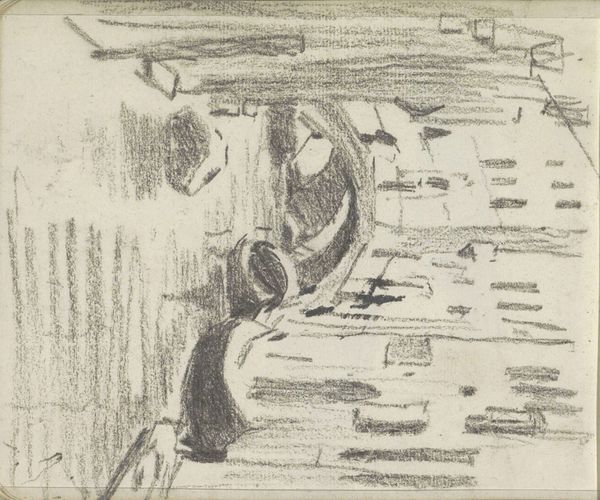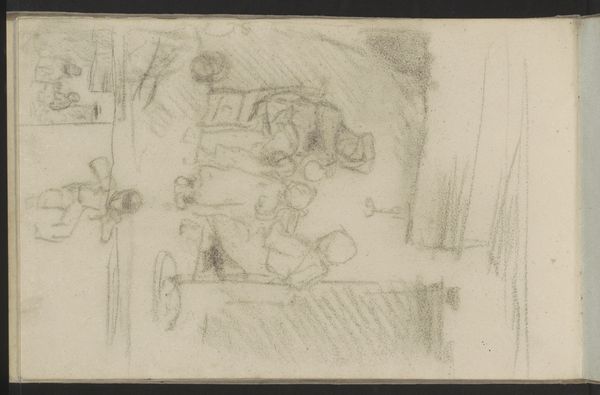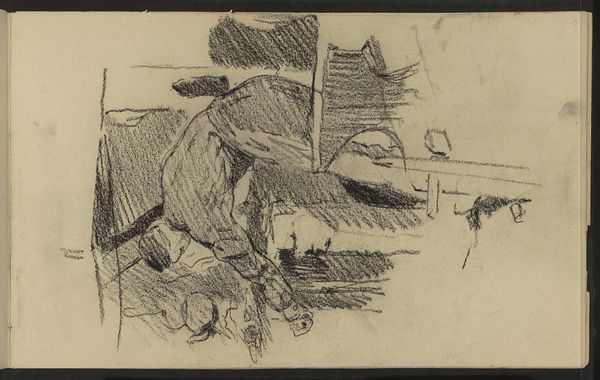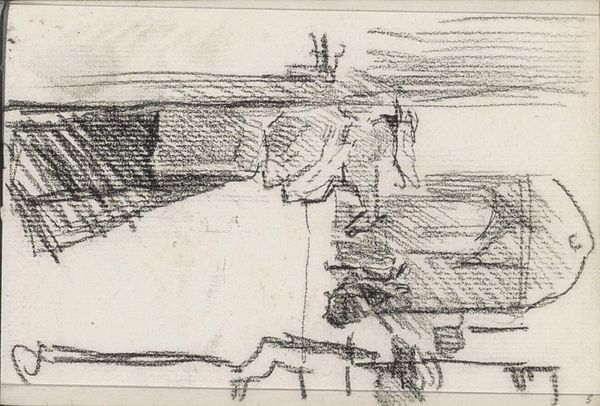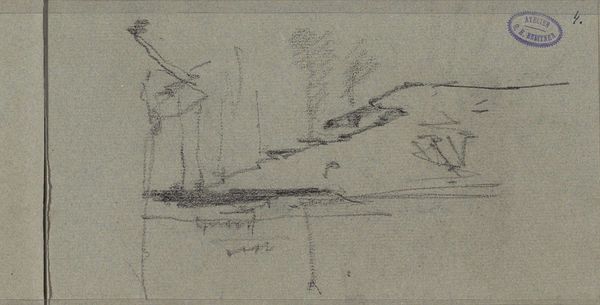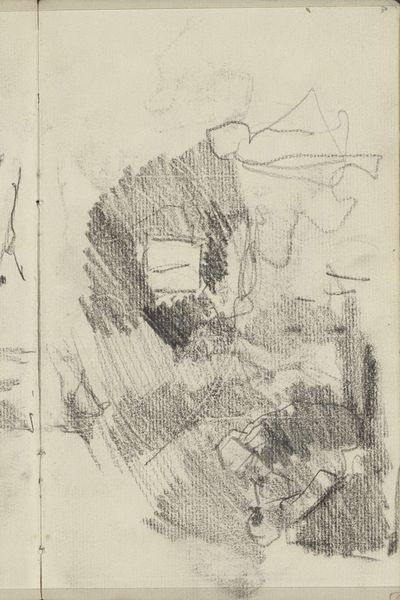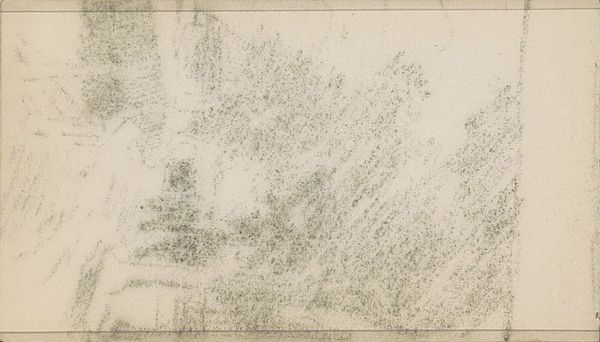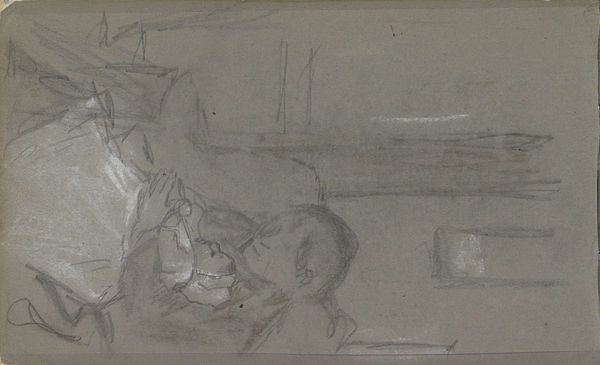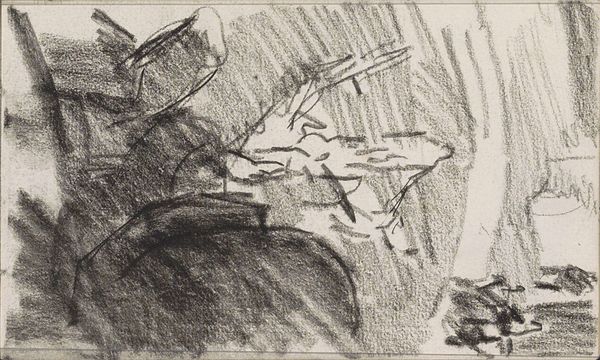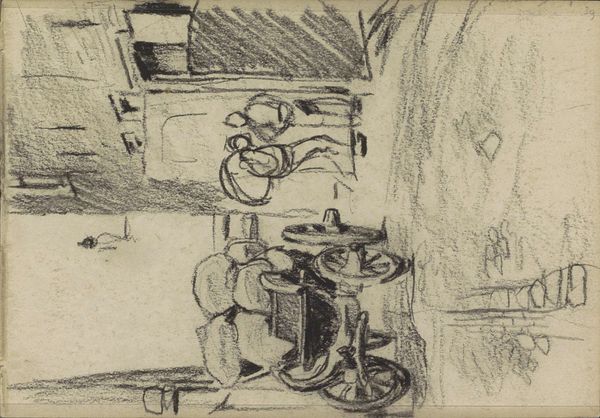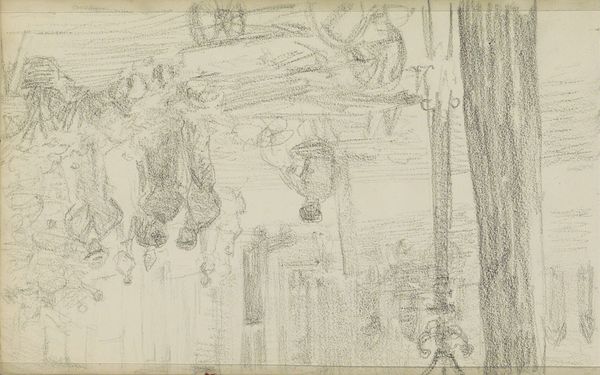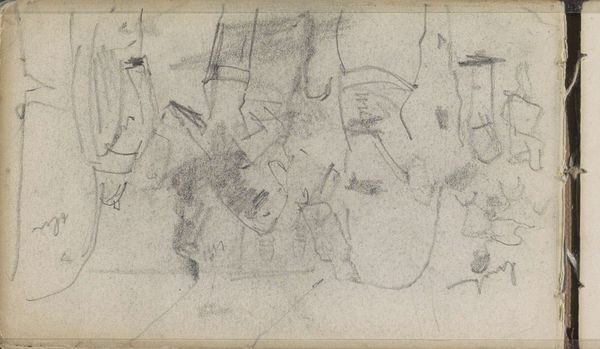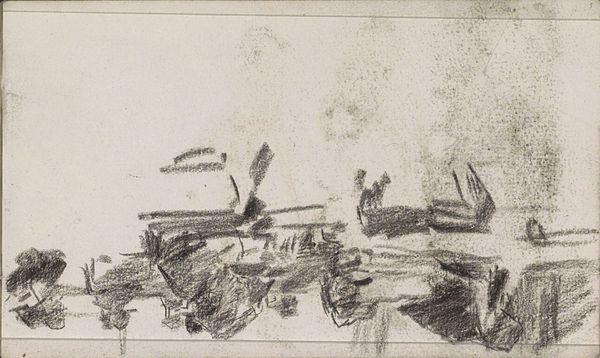
drawing, pencil
#
portrait
#
drawing
#
amateur sketch
#
toned paper
#
light pencil work
#
16_19th-century
#
impressionism
#
pen sketch
#
pencil sketch
#
personal sketchbook
#
pen-ink sketch
#
pencil
#
sketchbook drawing
#
genre-painting
#
sketchbook art
#
realism
#
initial sketch
Copyright: Rijks Museum: Open Domain
Curator: Immediately I sense a smoky haze—is that just the texture of the pencil, or is there more to it? Editor: Good observation. This is George Clausen’s 1875 drawing titled "Kopie naar 'De Staalmeesters' van Rembrandt", which translates to 'Copy after 'The Sampling Officials' by Rembrandt'. So you are right, it is rendered in pencil on toned paper. Curator: "Toned paper", yes, that explains a lot. So a material choice, the use of pre-shaded ground is already setting a mood, before a single mark. Interesting, because these initial marks suggest it’s either a sketch, or unfinished, maybe deliberately so? Editor: Perhaps a sketchbook study? Clausen was likely engaging with the established artistic canon through the act of copying, a common practice at the time. What’s interesting here, and with similar sketches, is seeing labor celebrated, though removed from the grand historical narratives which celebrated power. The material means – pencil, toned paper – reflect a very accessible way to reproduce art. Curator: Right, it's all about who gets to reproduce art and for what purpose. I’m struck by the contrast between the informality of the medium – a simple pencil sketch – and the formality of the original subject: officials, potentially very important people! Editor: And in that juxtaposition, something intimate surfaces; consider the rapid and repeated strokes as a means to investigate production and its many hands. Think also about the material conditions during industrial revolutions across Europe, where access to consumer goods began reshaping societal values. How might art function amid this moment? Curator: It becomes a visual shorthand for that era’s shifts! A pencil copy suddenly isn't just about art historical reverence; it's participating in a broader democratization of visual culture. Editor: Precisely, challenging traditional boundaries. So what starts as a personal engagement transforms into something sociopolitical in its implications. This really has set my mind racing about craft’s intersection with labor, art, and class. Thanks! Curator: Absolutely, and for me, it reveals how revisiting history through accessible means can transform not only our understanding of the artwork itself but its meaning and reception over time. A small drawing—but a large lens.
Comments
No comments
Be the first to comment and join the conversation on the ultimate creative platform.
